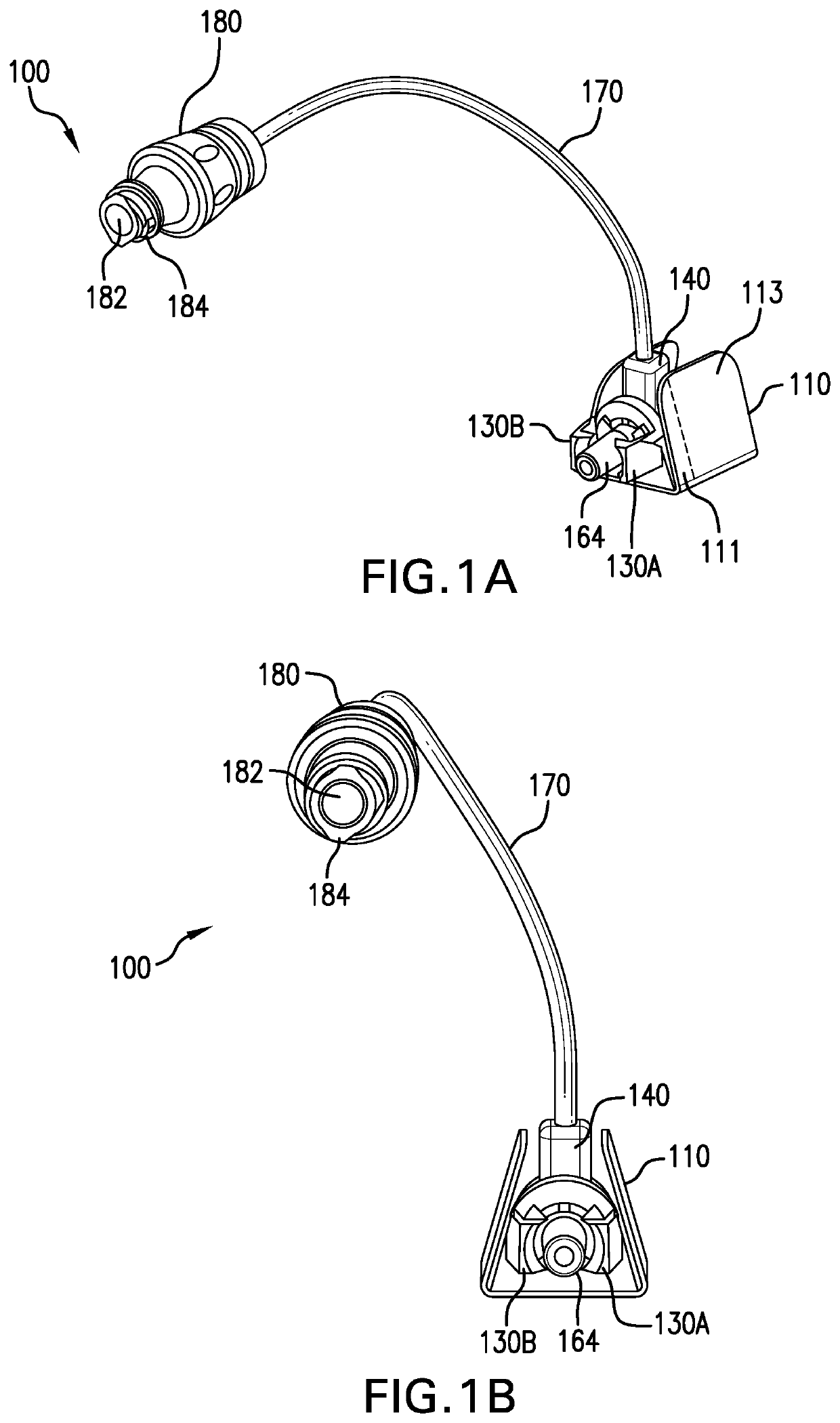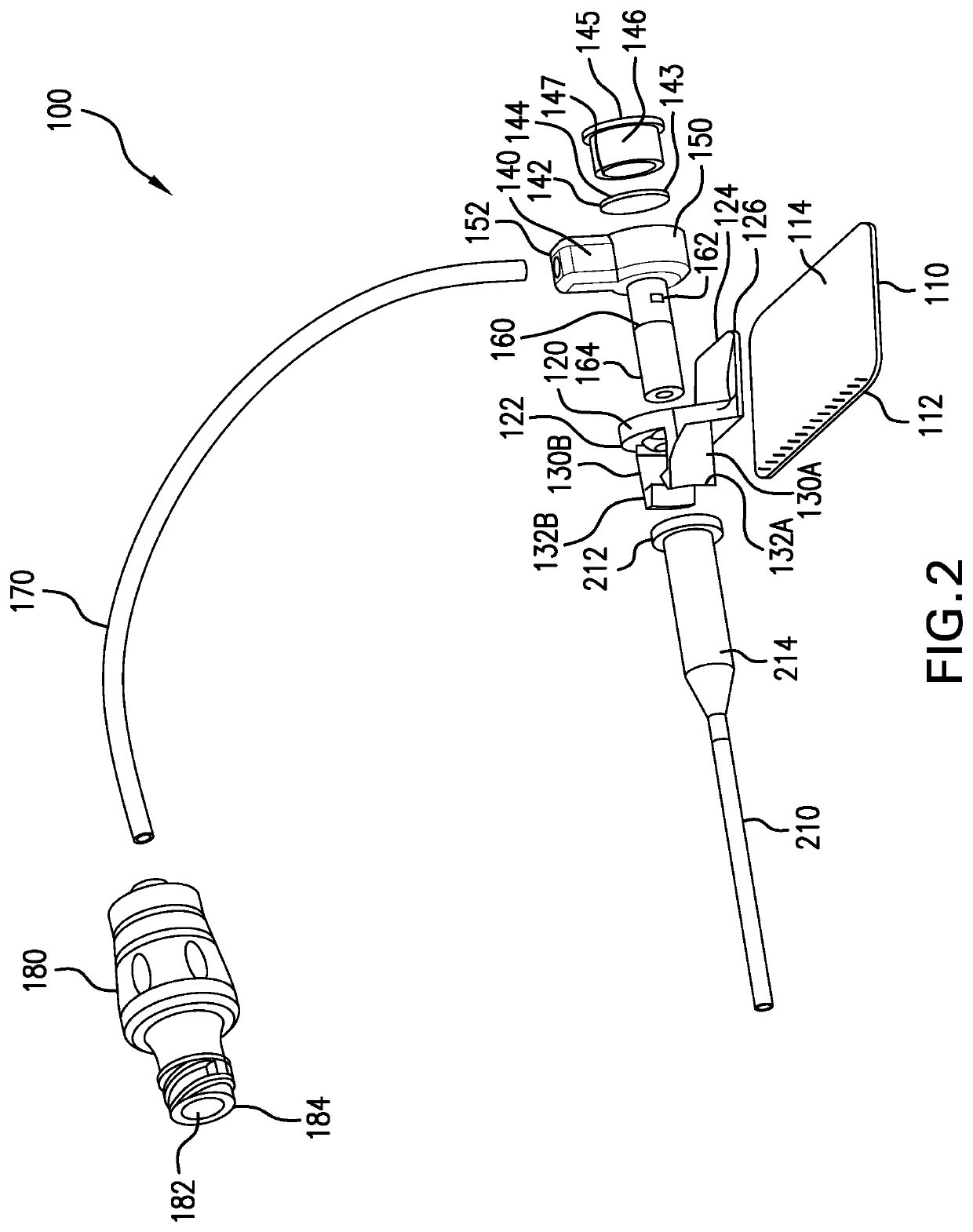Vascular access site management system
a management system and access site technology, applied in the field of vascular access sites, can solve the problems of local trauma, catheter and/or extension tube bending, and increase the risk of kinking, and achieve the effect of stabilizing the vascular access site management system
- Summary
- Abstract
- Description
- Claims
- Application Information
AI Technical Summary
Benefits of technology
Problems solved by technology
Method used
Image
Examples
Embodiment Construction
[0060]In illustrative embodiments, a vascular access site management system includes a stabilization body and a flow housing that is rotatable relative to the stabilization body. The flow housing may have a flow path extending through it to allow fluids to be introduced to or extracted from a patient via a catheter connected to the vascular access site management system. Additionally, in some embodiments, the vascular access site management system may include a needle free connector or other medical connector fluidly connected to the flow housing via a section of tubing. Details of illustrative embodiments are discussed below.
[0061]FIGS. 1A-1D schematically show a vascular access site management system 100 in both an undeployed state (FIGS. 1A and 1B) and a deployed state (FIGS. 1C and 1D), in accordance with some embodiments of the present invention. FIG. 2 shows an exploded view of the vascular access site management system 100. The management system 100 may include a stabilizatio...
PUM
 Login to View More
Login to View More Abstract
Description
Claims
Application Information
 Login to View More
Login to View More - R&D
- Intellectual Property
- Life Sciences
- Materials
- Tech Scout
- Unparalleled Data Quality
- Higher Quality Content
- 60% Fewer Hallucinations
Browse by: Latest US Patents, China's latest patents, Technical Efficacy Thesaurus, Application Domain, Technology Topic, Popular Technical Reports.
© 2025 PatSnap. All rights reserved.Legal|Privacy policy|Modern Slavery Act Transparency Statement|Sitemap|About US| Contact US: help@patsnap.com



